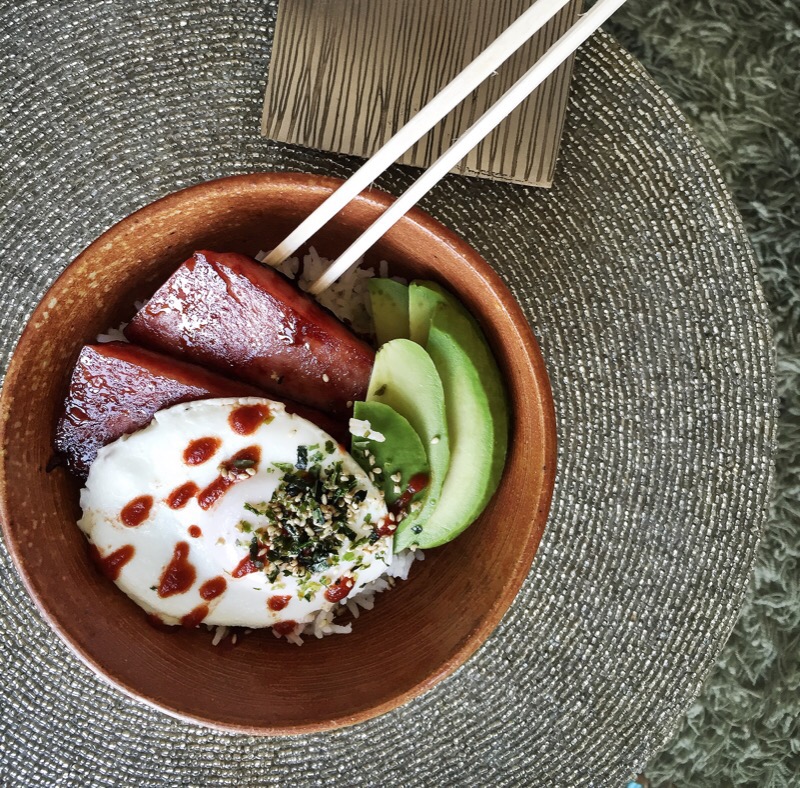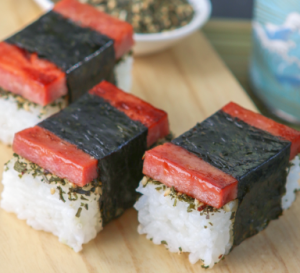I will be the first to admit that I have an addiction to everything and all things Asian food. There is something about the fresh ingredients that are used along with the spices that constantly have me craving some sort of Asian dish. In addition to that, I am a huge fan of all of the condiments that are used. Because of this, I have a whole shelf in my refrigerator designated to all of my different Asian condiments. The other day I was looking at food posts on Instagram and I came across post about Hawaiian dishes, one in particular called, Chicken Long Rice.
Chicken Long Rice is a traditional Hawaiian dish mainly used in Lu’au’s that roots in the Chinese culture. The name “long rice” might cause some people to think that rice is used in this dish, however, long rice is a term used to describe cellophane noodles. Cellophane noodles are glass-like noodles made of starch and water.
While I really love the traditional dish and the ingredients used, I wanted to add a few more ingredients to kick this dish up a notch. By add fish sauce, liquid aminos, lime juice and some dried chili pepper, this dish is transformed into a meal that has a nice Thai twist. Because the dish is so simple, it is a great base for all different flavors and can be transformed into whatever your heart desires. It a filling without weighing you down and leaves you feeling satisfied. The recipe is as follows!
Chicken Long Rice with a Thai Flare
3 pounds of Chicken leg quarters
3 cartons of low-sodium chicken broth
1 tablespoon Hawaiian sea salt
1 inch piece of fresh ginger root
1 large sweet onion, cubed
10 ounces uncooked cellophane noodles
1 bunch green onions, thinly sliced
1 small head of bok choy, chopped
2 tablespoons fish sauce
2 tablespoons amino acids
1 tablespoon dried red chili flake
2 tablespoons lime juice
1 jalapeno, sliced
Place chicken, chicken broth, salt, and ginger into a large pot. Bring to a boil over high heat, then reduce heat to medium-low and simmer until the chicken is tender and no longer pink, about 35 minutes. Remove chicken, and strain broth into a new pot. Discard the solids.
Stir onion into the broth, and bring to a boil, then reduce heat to medium-low. Meanwhile, remove the skin and bones from the chicken and discard. Roughly chop the meat and set aside. Add the noodles and let them hydrate for about 30 minutes. They should soak up most of the broth. Add the chicken meat, green onion, bok choy, fish sauce, amino acids, lime juice and dried red chili flake.
Once the noodles are cooked and the meat is heated back up, serve and top with a few slices of jalapeño. Enjoy!
Because I am a HUGE fan of cellophane noodles, I really enjoyed this dish. I served mine with some sriracha on the side because I am a lover of the heat, but if you do not like spicy things than just skip the jalapeño step! You can even use this dish as a base for a “pad thai” and add a homemade peanut sauce if you would like. I hope you enjoy this dish as much as I did!
xoxo Sarah


 uring this time, it was introduced to islands such as Guam and Hawaii and eventually became absorbed into native diets. Thus a popular Hawaiian dish, Spam Musubi, was born. Spam Musubi is a popular lunch or snack food that consists of a slice of grilled spam on top of a block of rice, wrapped together with nori dried seaweed in the tradition of Japanese omusubi. With this traditional food in mind, I wanted to make a dish that was inspired by these flavors. By incorporating some of my favorite ingredients like avocado, Sriracha, and eggs, I created a rice bowl that makes Spam seem a little less intimidating to those who find it to be rather eerie. Below is the recipe!
uring this time, it was introduced to islands such as Guam and Hawaii and eventually became absorbed into native diets. Thus a popular Hawaiian dish, Spam Musubi, was born. Spam Musubi is a popular lunch or snack food that consists of a slice of grilled spam on top of a block of rice, wrapped together with nori dried seaweed in the tradition of Japanese omusubi. With this traditional food in mind, I wanted to make a dish that was inspired by these flavors. By incorporating some of my favorite ingredients like avocado, Sriracha, and eggs, I created a rice bowl that makes Spam seem a little less intimidating to those who find it to be rather eerie. Below is the recipe!